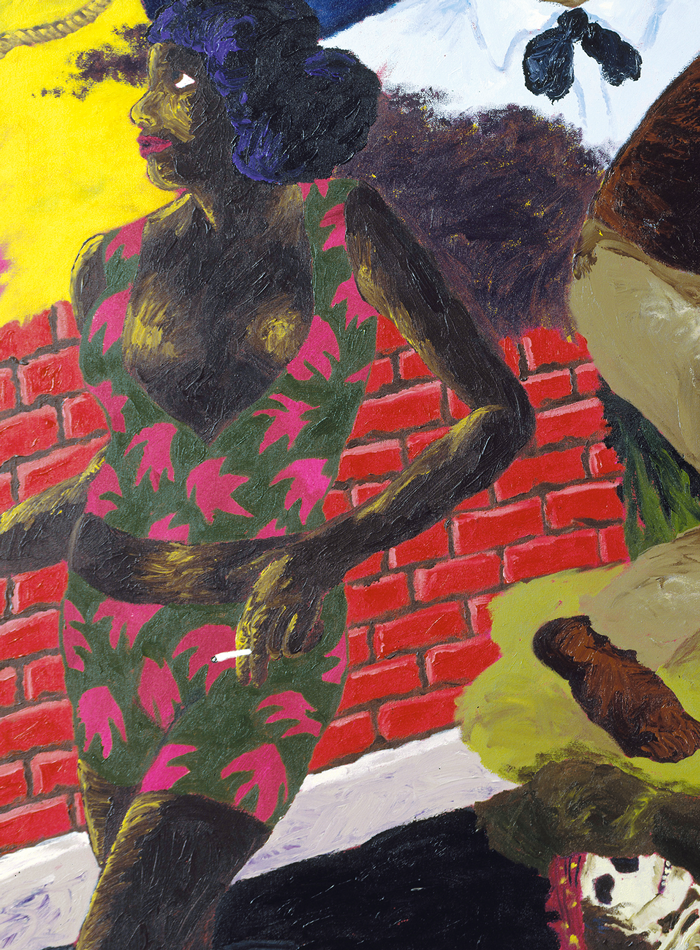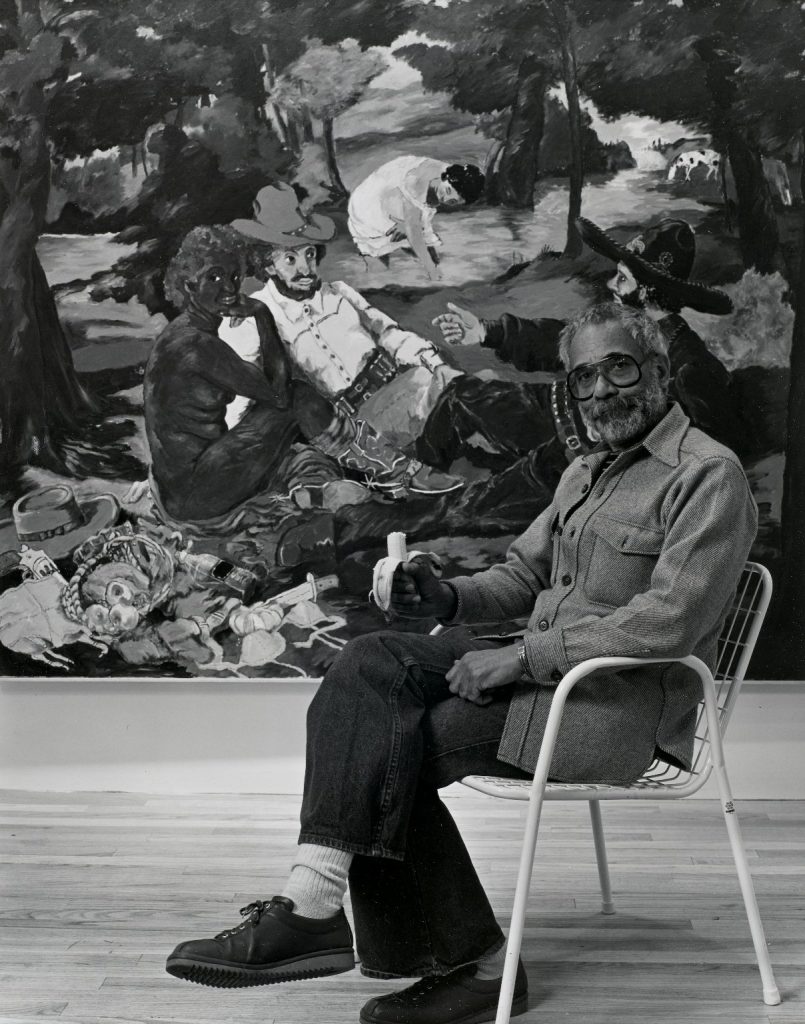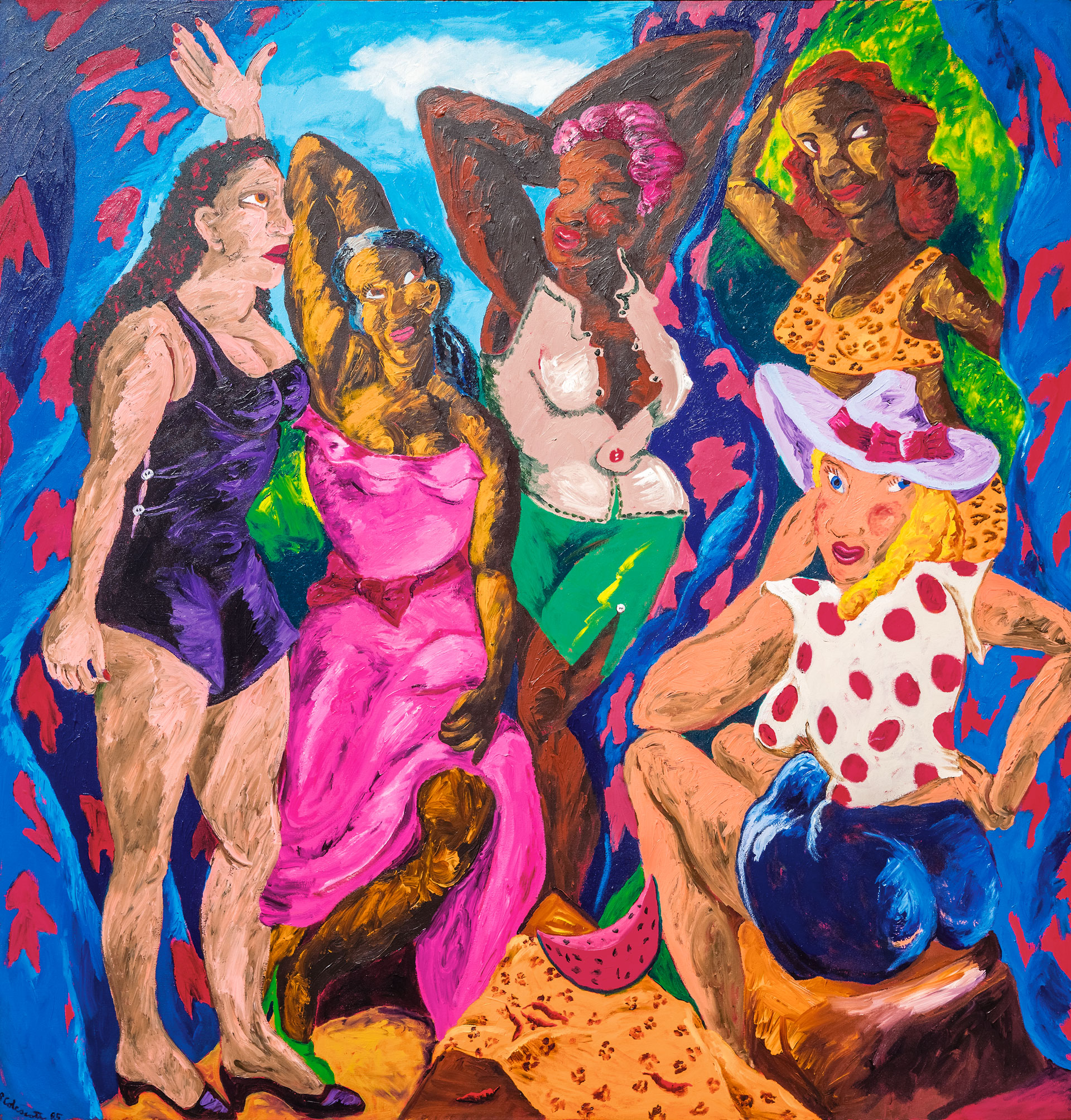Robert Colescott

Knowledge of the Past is the Key to the Future: Some Afterthoughts on Discovery (detail), 1986, Robert Colescott
The decades following the First World War saw one of the largest demographic shifts in United States history as African Americans relocated from the rural South to the industrial North during The Great Migration. The barriers to integrating into urban life were high and the impact of this exodus on the aspirations and struggles of Black communities was wide reaching.
Learn more about Knowledge of the Past is the Key to the Future: Some Afterthoughts on Discovery
"When it came down to choosing my major, the counselor at the college . . . advised me to reconsider because he didn't think that there would be a career for me as an African-American person. There would be no career, say, in the diplomatic corps."
– Robert Colescott
"I kind of blew apart abstract painting and put it back together again. And I did a lot of different things, always knowing that the farther I got into expressionism, the more I wanted to come back to a more structured idiom."
– Robert Colescott

Robert Colescott
1925–2009
Born in Oakland, California, Colescott was the son of two musicians who migrated from New Orleans to California in 1919 as part of the first wave of . Colescott grew up during the Great Depression and volunteered for military service in World War II. His initial studies after the war focused on .
Ultimately, Colescott received his BA and MA in art from the University of California, Berkeley. Following his graduate studies, Colescott lived and worked in Seattle and Portland before traveling to Egypt in the 1960s to study and teach at the American Research Center in Cairo, a stay that proved transformational. Studying the monuments and history of ancient Nubia was as significant as living in a country where everybody, including the president, was a person of color. He returned to the United States in the midst of the Civil Rights Movement and Black liberation struggle.
In 1997 he was the first African American artist to represent the United States at the Venice Biennale, and he is the subject of a major upcoming retrospective planned for fall 2019 at the Contemporary Arts Center, Cincinnati. Colescott candidly addresses the social and political pressures of race relations in the United States in his where Black subjects are observers, agents, and narrators of an incomplete and revised history.
Images: Arthur Mones (American, 1919-1998). Robert Colescott, 1981. Gelatin silver photograph, sheet: 14 x 10 3/4 in. (35.6 x 27.2 cm). Brooklyn Museum, Gift of the artist, 1997.162.14. © Estate of Arthur Mones. George Washington Carver Crossing the Delaware: Page from an American History Textbook, 1975, Robert Colescott, acrylic on canvas, 84 x 108 in., Private collection, Saint Louis, © 2017 Estate of Robert Colescott / Artists Rights Society (ARS), New York, photo: Jean Paul Torno. Les Demoiselles d’Alabama: Vestidas, 1985, Robert Colescott, acrylic on canvas, 96 x 92 in., Seattle Art Museum, General Acquisition Fund, Bill and Melinda Gates Foundation Art Acquisition Fund, Margaret E. Fuller Purchase Fund, and Patricia Denny Art Acquisition Fund, 2016.12, © 2017 Estate of Robert Colescott / Artists Rights Society (ARS), New York, photo: Mark Woods. Knowledge of the Past is the Key to the Future: Some Afterthoughts on Discovery, 1986, Robert Colescott, acrylic on canvas, 90 x 114 in., The Metropolitan Museum of Art, New York, Arthur Hoppock Hearn Fund, 1987.166, © 2017 Estate of Robert Colescott / Artists Rights Society (ARS), New York / Art Resource, NY.





